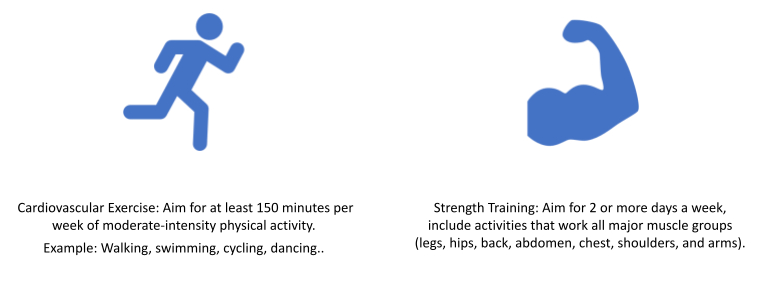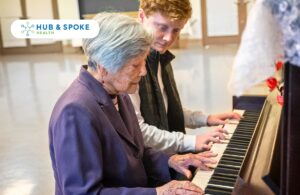Type 2 diabetes is a progressive chronic condition in which the body becomes resistant to the expected effects of insulin and gradually loses the capacity to produce enough.
In 2020, diabetes was ranked seventh in Australia’s leading causes of death, with almost 1 in 20 Australians having diabetes (5.3% or 1.3 million people). Nearly one in five (19.2%) people over 75 had diabetes.
Making positive lifestyle changes, such as increasing exercise, losing weight, and improving dietary intake, can help you manage and can reverse type 2 diabetes.
What is type 2 diabetes?
Type 2 diabetes is a chronic condition in which the body becomes resistant to the expected effects of insulin and gradually loses the capacity to produce enough.
This impairment in how the body regulates and utilises sugar (glucose) as fuel causes excess sugar to circulate in the bloodstream.
High blood sugar levels can eventually cause circulatory, nervous, and immune system disorders.
These can lead to serious health complications such as heart disease, stroke, kidney failure, blindness and amputations.
Common causes of type 2 diabetes
Lack of physical activity, being overweight or obese increases your risk of developing type 2 diabetes. Extra weight can lead to insulin resistance which is common in people with type 2 diabetes. Body fat distribution around the belly is also linked to insulin resistance.
The role of exercise for type 2 diabetes patients
Being physically active can help you manage your diabetes because it increases your body’s sensitivity to insulin, the hormone that enables your cells to use blood sugar as fuel.
Exercise is an essential part of managing type 2 diabetes. Regular physical activity helps to lower blood sugar levels, improve insulin sensitivity, and reduce the risk of developing complications associated with diabetes. Exercise can also help to reduce stress, improve mood, and increase energy levels.
Several types of exercise can benefit people with type 2 diabetes. These include aerobic activities such as walking, jogging, swimming, cycling, and dancing; strength training exercises such as weight lifting and resistance band exercises; and flexibility exercises such as yoga and Pilates.
It is essential to find an exercise routine that works for you.
Benefits of exercise for a person with type 2 diabetes
- Improves insulin function, which enhances diabetes management.
- Maintains a healthy weight.
- Improves cholesterol and blood pressure.
- Decreases your risk of heart disease.
- Improve cardiovascular health.
- Decreases stress.
- Decreases inflammation.
Warning- Do not complete the strenuous physical activity if you are experiencing hypoglycemia or have ketones present in your blood or urine.

How to set yourself up for success when starting an exercise program
- Find something you enjoy: It’s essential to find an activity you enjoy because if you don’t like it, you won’t stick with it.
- Start small: If you’re not physically active, you should begin slowly. For example, take the dog for a walk or use the stairs at work instead of the lift. Begin with small increments of time and intensity, then increase as the weeks progress.
- Find your cheerleader: Find someone who will motivate and support you on your journey.
- Goal setting: An example of a goal could be I want to walk 3x weekly for 30 minutes. Be specific and realistic.
- Plan for it: Establishing it as a habit requires consistency. The more you do, the easier it gets. Think of ways to link activity to daily life. For example, going for a morning walk after breakfast.
- Get help: If you’re stuck on ideas or want guidance. An accredited exercise physiologist is trained in diabetes management and can assist you in your journey.
Exercise guidelines for type 2 diabetes patients
- Before beginning any exercise program, discuss the most appropriate physical activities with your healthcare provider. Consider what you enjoy, how to prepare, and what should be avoided when participating in activities.
- It is also essential to monitor your blood sugar levels regularly – during (at least initially), and after exercise. This will help you identify potential problems or trends in your blood sugar levels that may need to be addressed.
- Take care of your feet! Always inspect your feet before and after exercise for ulcers or other lesions. Make sure you are wearing comfortable and well-fitted shoes.
- It’s essential to stay hydrated while being physically active. Make sure to drink plenty of water to avoid dehydration. Keep a carbohydrate snack on you during exercise, examples include fruit juice, jellybeans etc.
If you have any diabetes complications like retinopathy or nephropathy, you should talk to your doctor or an accredited exercise physiologist before you start your exercise journey!

Final thoughts on type 2 diabetes and exercise
Overall, exercise is an essential part of managing type 2 diabetes. Finding an activity, you enjoy and stick with can help improve your overall health and reduce the risk of developing complications associated with diabetes.
Additionally, making other lifestyle changes, such as eating a healthy diet, maintaining a healthy weight, quitting smoking, and reducing alcohol consumption, can also help to improve overall health.
References
Colberg, S. R., Sigal, R. J., Fernhall, B., Regensteiner, J. G., Blissmer, B. J., Rubin, R. R., . . . Braun, B. (2010). Exercise and type 2 diabetes. Diabetes Care, 33(12). doi:10.2337/dc10-9990
Colberg, S. R., Sigal, R. J., Yardley, J. E., Riddell, M. C., Dunstan, D. W., Dempsey, P. C., . . . Tate, D. F. (2016). Physical activity/exercise and diabetes: A position statement of the American Diabetes Association. Diabetes Care, 39(11), 2065-2079. doi:10.2337/dc16-1728
Australian Bureau of Statistics: Causes of death, Australia, 2020. Retrieved November 14, 2022, from https://www.abs.gov.au/statistics/health/causes-death/causes-death-australia/2020
Book an appointment with us today! Our team of experts will lead you down the best treatment path for your condition.
Author
-

Courtney Griffin-Jones is one of the Exercise Physiologists at Hub And Spoke Health based on Glen Iris. Courtney is particularly interested in areas such as osteoporosis, mental health, cancer, cardiovascular diseases, diabetes (Type 1 & type 2) and neurological conditions; as well as general signs of ageing (sarcopenia) including balance and falls prevention.
View all posts

















